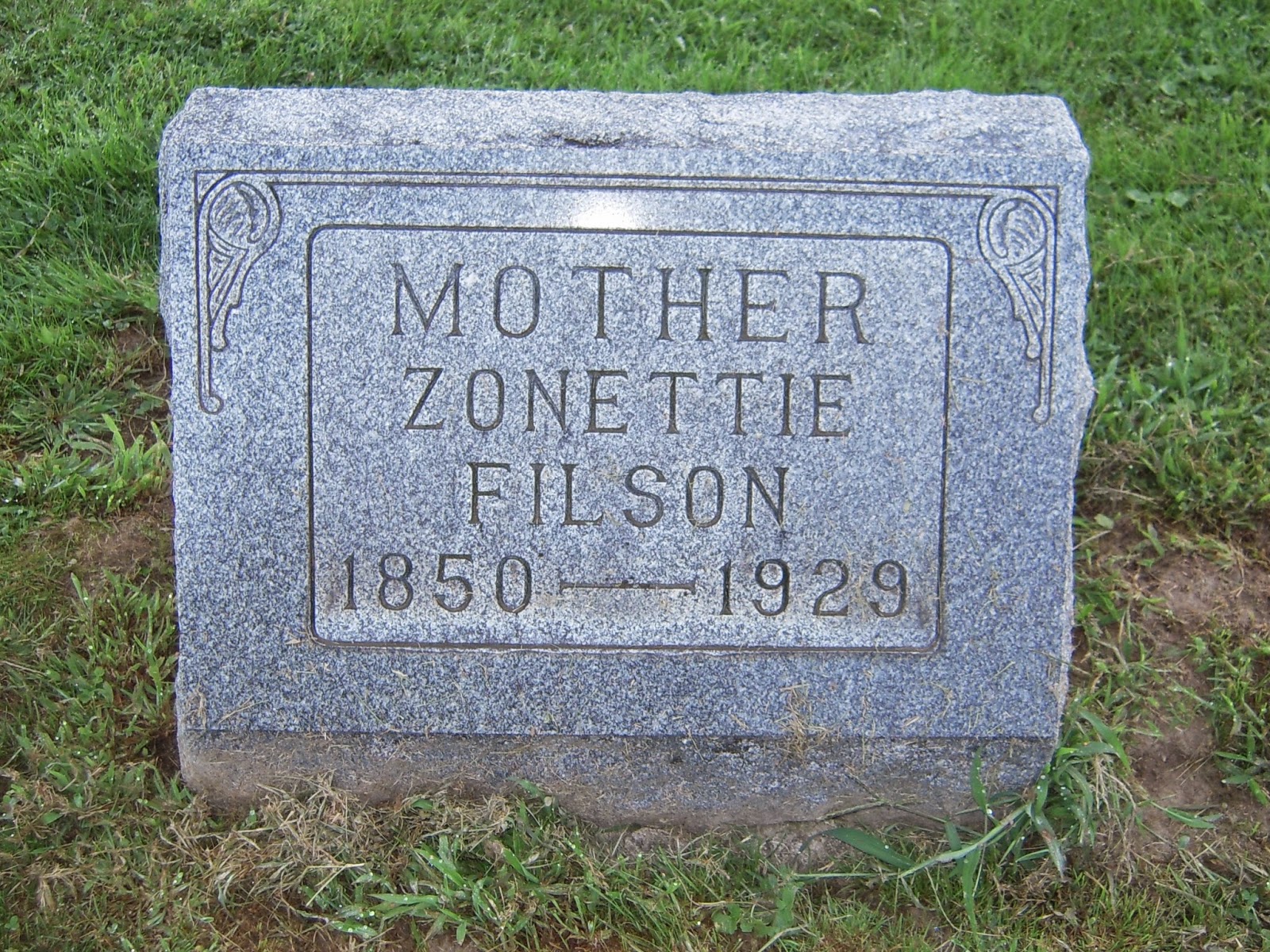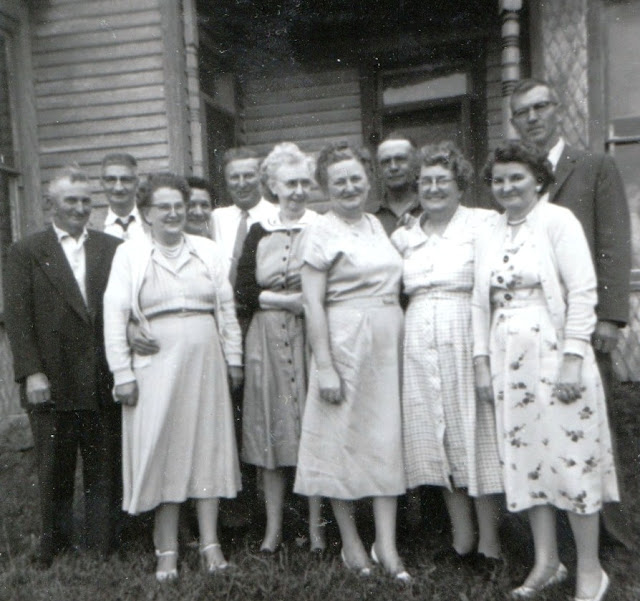 |
| Taylor Silvers Filson (1824 - 1916) Family photo, source Grace Filson |
 |
| Taylor Silvers Filson Civil War Pension records from the National Archives in Washington DC |
 |
| 1872 Map of Inwood, Indiana, Courtesy Marshall County Historical Society |
He
cleared the land on his farm of the timber, mainly oak and walnut, and built a
log cabin and dug a well filling it with water from the ground or the nearby
Yellow Creek. Eventually, as his family grew he expanded to a small house, and
then the small house grew to a two story home, with a barn, a corn crib, a
chicken coup and an outhouse. He raised work horses and milk cattle and sold
lumber to the lumber yard. Cash was not used much in those days; he would use
the lumber, crops and farm products such as milk and eggs to barter for what he
needed. He would exchange labor with his neighbors as there was always endless
farm work to perform. When the land was cleared of all the trees and the swampy
land drained into the creek, it was turned into some of the most fertile
farmland in the Midwest. A garden was maintained to grow vegetables for the
family and hunting for birds and local wildlife would put food on the table.
They would have grown an orchard and vines of berries, which still grow on the
land today. |
| Plymouth Indiana Postcard, Courtesy Indiana Historical Society |
 |
| Bremen, Indiana, Courtesy Indiana Historical Society |
 |
| Filson Farm, Marshall County Indiana, late 1800s |
 |
| Taylor and other family members standing in front of the farm |
 |
| Marriage Record of Taylor Filson and Amanda Hunter 1867 |
They married in 1867 and one year later had their first son William L., their first daughter Sarah Elizabeth in 1870 and in 1872 bore my greatgrandfather, John Thomas, followed by their last child, Anna Ruth in 1874. In 1888, sadly Amanda died leaving four children from the ages of 14 to 20 years old. She is buried at Mt Pleasant Cemetery, which is down the long dirt road from the Filson Family Farm.
 |
| Amanda Hunter Filson Obituary, The Republican Newspaper, November 16, 1888 |
My other Great-Great-Grandfather was named Christian Manuwal. Taylor
and Christian met in Stark County, Ohio and both moved to Marshall County,
Indiana and became lifelong friends. They each had a son and daughter, of which
married the other's son and daughter. They attended the same church, shared
grandchildren, and were both delegates for the Republican Party. They also both
served in the Civil War but had very different experiences.
By 1910 Taylor had turned over the family farm to his son John Thomas
and he, Zonettie and her two sons, moved to Plymouth, Indiana, where he lived
next door to Christian and Elizabeth (Zimmerman) Manuwal on Simon Street.
 |
| 1910 United States Census |
 |
| Zonettie Caldwell Filson Affidavit contained in Taylor Filson's Pension Records at the National Archives in Washington DC |
“Mrs. Zonettie D
Filson 78 years old, died at the St. Joseph's Hospital at Fort Wayne at 5
o'clock Sunday evening after an illness of four months. She was a former
resident of Plymouth but for several years has lived with her son Clarence
Winget of Fort Wayne. Besides Clarence, she is survived by a son, Archie
Madison [Mathewson] of Long Beach, California, two sisters, Mrs Elizabeth
Bristol of Chicago and Mrs. J. B. Camerer of Toho, Iowa; and two brothers, S.
A. Caldwell of Bronson, Kansas and W. A. Caldwell of Alexander, Ill., also
survive. Funeral services will be held at the Bunnel mortuary at 3 o'clock
Wednesday afternoon with burial in Oak Hill cemetery.”
Notice there is no mention of Taylor.
 |
| Tombstone of Zonettie Filson Oak Hill Cemetery, Plymouth, Indiana |
When Taylor grew ill in 1915, he moved back to the Filson farm and was
cared for by his son John Thomas, John's wife Catherine (Manuwal) and their children,
Robert, Russell and Cosa.
In a letter written by Cosa Filson (Heckaman) to a cousin inquiring about
the family and the family history, Cosa replies: (Note: I believe this is a
granddaughter of Taylor’s brother Thomas Carey Filson)
Plymouth, Ind.,August 12,
1916
Dear faraway cousin, I received the letter that you had written to Grandfather Filson, but am sorry to tell you that he has passed away from this world into a far more happier world than this, at 2pm on Wednesday, August 30, 1916, at age 74 years, six months, and eight days.
 |
| Cosa Filson |
Dear faraway cousin, I received the letter that you had written to Grandfather Filson, but am sorry to tell you that he has passed away from this world into a far more happier world than this, at 2pm on Wednesday, August 30, 1916, at age 74 years, six months, and eight days.
He has needed the care of a little child for nearly 9 months. He came to stay with us on August 1, 1915 where he remained until his departed to the other world. He was here for 13 months. During the time he was here, he was converted to Jesus Christ and has been truly manifested through his beautiful and patient life since that experience came to his heart on the first day of February, 1916. This date of his new birth into the kingdom of God was also the date of his Christian baptism and his reception into the Methodist Episcopal Church of Inwood. His praise for the goodness of God in the salvation of his soul, continued without a break until the father's summons to eternity. He was one of the most patient person's to care for that ever I saw. For the last three months off and on, he would not have his right mind. He would be talking about one subject and the first thing we knew, he would be talking about something else.
You were asking in your letter about Aunt Mary Alderfer. She died December 15, 1904. She had two children, William and Lizzie, and a number of grandchildren and great-grandchildren.
You also asked about Uncle John's people. Well, Uncle John himself died about five years ago and the family, at least the last track we had of them, they were in different parts of Ohio.I am sure if grandfather would be a living and had his right mind, he would be glad to trace it back and I am sure he could.
I have heard Taylor Filson, (that is my grandfather), speak of you and Fern Filson. Do you know who she is?
My name is Cosa Filson and I am 17 years old. I am in the third year of Inwood High School. Inwood is about 7 miles east of Plymouth. I am the oldest child of [John] Thomas. I have two brothers, one 13 years [Russell] and the other 5 years [Robert]. My youngest brother [Robert] had three of his fingers on his right hand partly taken off. William Alderfer, that is, Aunt Mary Alderfer’s first boy, said that if he remembers right, your folks lived in Plymouth when you were a little girl.
Say, would you please tell me who your father is and who your father's father is? I would really greatly appreciate to tell you about the family history of the Filson's if I could and would more than be glad if you would write and tell me who your father and grandfather is. I'm sorry I didn't know where you folks were before, for I surely would have written and told you how poorly Taylor Filson was. His daughter said that they had lost track of all of his relatives nearly.
Will be pleased to hear from you. Your faraway cousin,
Cosa E Filson,
Plymouth, Indiana
Rural Route 3, Box 22
 |
| Source: Compiled Genealogy of the Filson family by Marjorie Barber Coffin, located at The Marshall County Historical Society, Plymouth, Indiana |
Upon Taylor’s death his obituary reads:
Plymouth Democrat,
Sept 07, 1916
Mr. John Thomas
Filson was the father of two families of children. Taylor Silvers, the subject
of this obituary, was the fourth and youngest of the first family. He was born
at Fostoria, Senaca County, Ohio (1) on the 22nd day of February 1842.Elizabeth Carey Filson was his mother, dying during his youth. Soon the second companion of their father's love became the foster mother of his family and two half brothers and four half-sisters became members of the household. But as the sands of time added the years to eternity's duration, the father, the foster mother, one sister, Mary Alderfer, two brothers, Thomas C. And John, and the four half sisters, Elizabeth, Sarah, Nancy and Ruth all passed from this mortal sphere.
Taylor Filson was a patriotic citizen and seeing the great need of his service in the Civil War (1861-1865), he heeded his country's call to the colors and served in Company F, 55th Ohio Volunteer Infantry for a period of more than three years and nine months. He bore the scars of battle until his dying day.
Mr. Filson being honorably discharged from the country's service came to Center Township, Marshall County, Indiana, to make his future home. On the 26th day of February 1867, Miss Amanda Hunter became his bride. They founded their domestic habitation on a farm one mile north of the little town of Inwood. Two sons, William L and John Thomas and two daughters Sarah Ellen and Anna R. Were given to this union. The mother of this family died on the 4th day of November, 1888. During the unity of this family their residence was always in this one location, and even for nine years after the companion of his young manhood had gone to another world Mr. Filson made the old homestead his abiding place. He then lived in Plymouth, Marshall County, for 19 years, having been married to Zonettie Mathewson June 22, 1890.
Age has been creeping upon him and in his declining days he went to the home of his son, Thomas in sight of the birth place of his family of children, where he remained until his days were numbered. Great affliction of body has been his portion for many months.
He died on Wednesday afternoon, August 30th, 1916, at the ripe old age of 74 years, 6 months and 8 days.Those near and dear who mourn his departure are his wife, his entire family of children, two half brothers Simeon, of Fostoria and Simon, of Findlay, Ohio and his five grandchildren Mrs. Pearl Greer, Carl Rentschler, Cosie, Russell and Robert Filson.
.jpg) |
| Taylor S Filson Obituary Plymouth Democrat, Sept 07, 1916 |
 |
| Grave of Amanda Hunter Filson and Taylor Silvers Filson, Old Mount Pleasant Cemetery in Bourbon Township, Marshall County, Indiana |


.jpg)


.jpg)



























